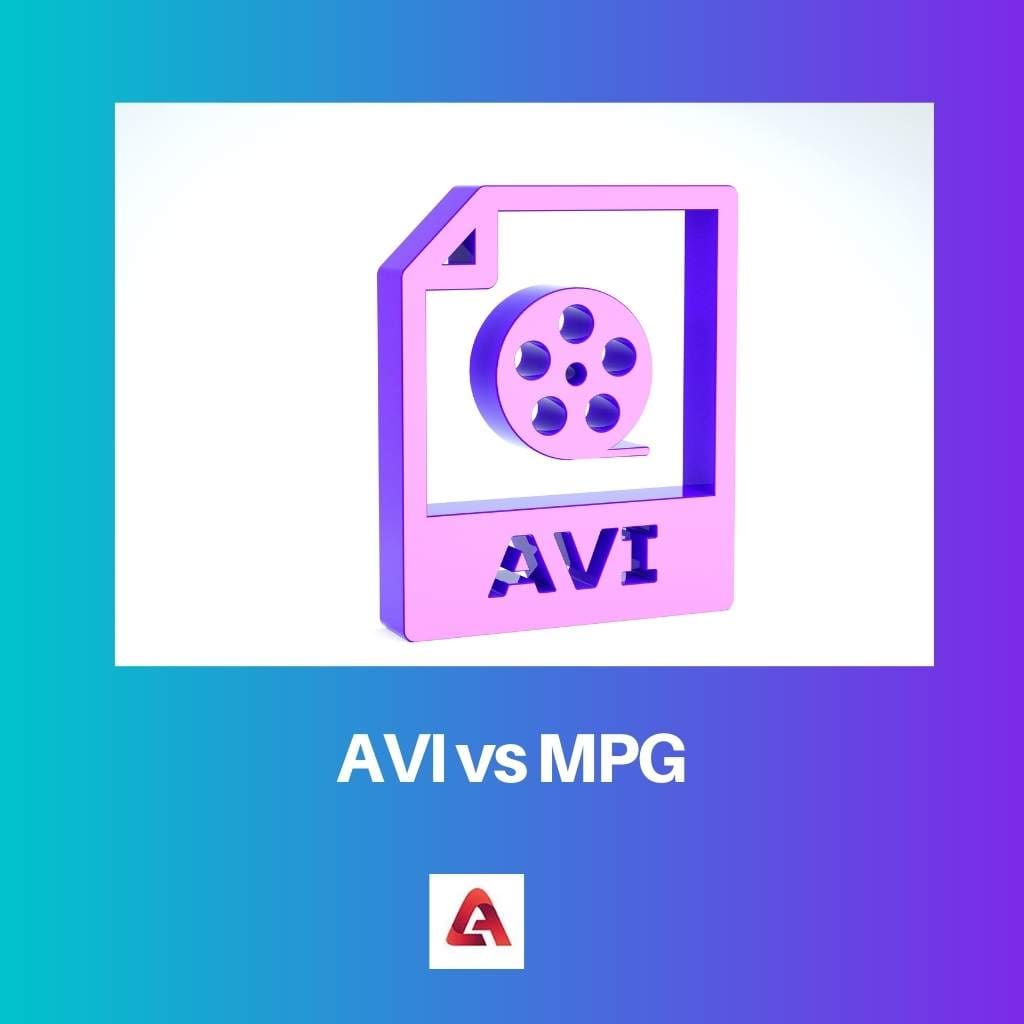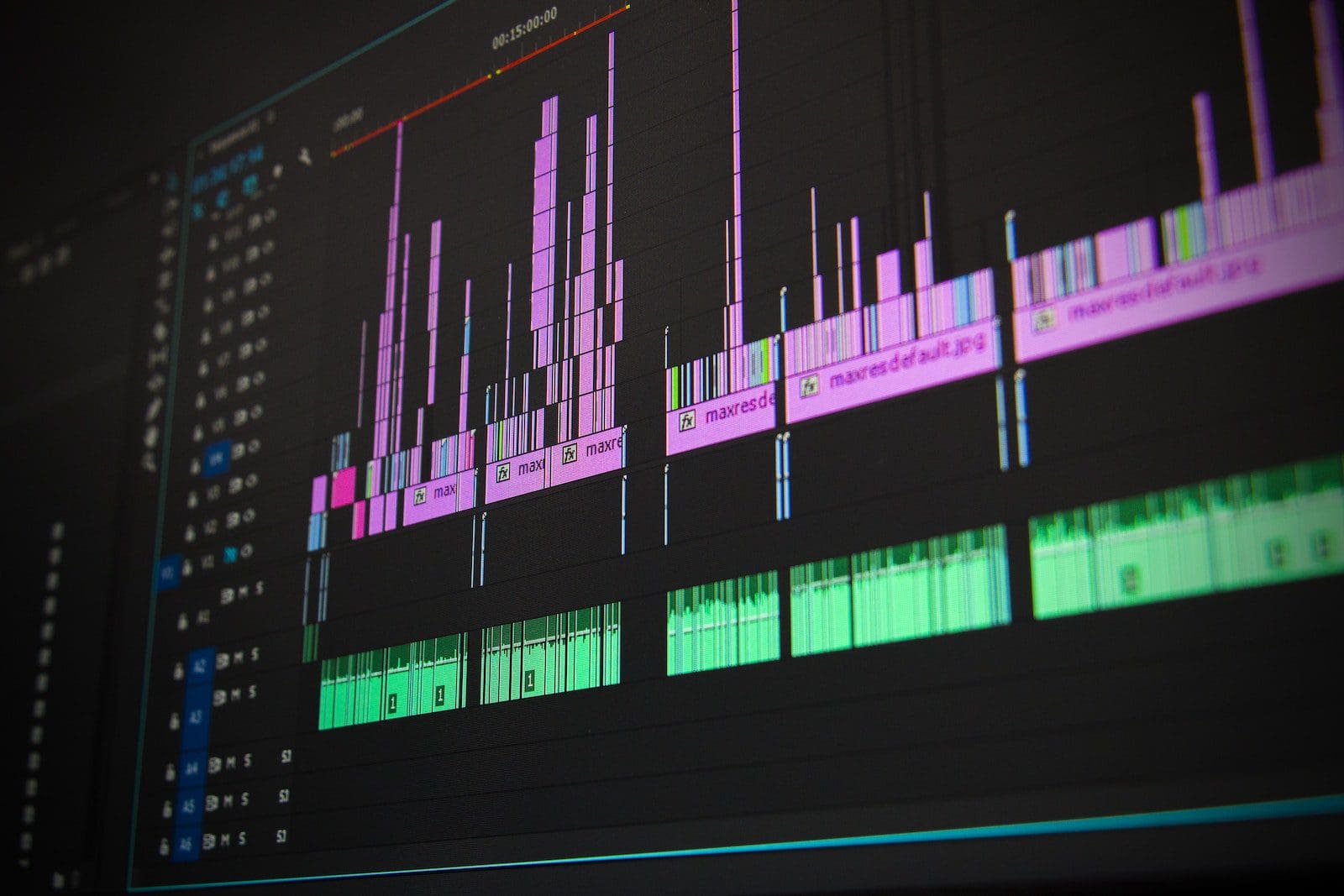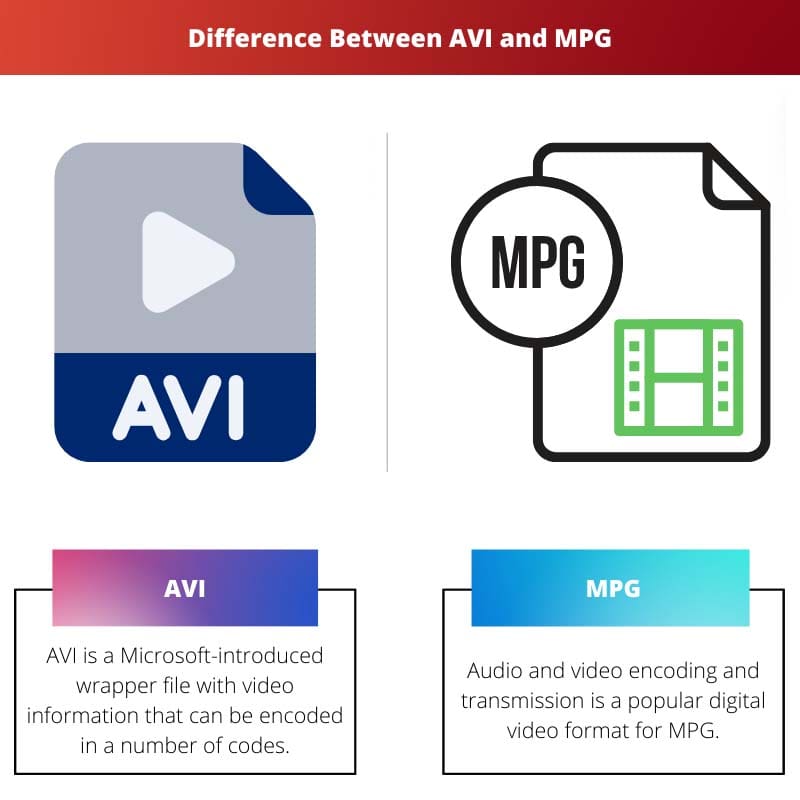Audio Video Interleave stands for AVI. It has been used in the Windows technology Video. Windows have developed it in reprisal of Apple’s MOV file format.
Most people don’t know that AVI and MOV aren’t formats of encoding but are wrappers for video formats. The Moving Picture Experts Group, on the other hand, is represented by MPG. MPG is a series of extensions. The normal MPEG-1 and MPG-2 lack video and audio compression.
Key Takeaways
- AVI is a container format used to store audio and video data, while MPG is a compression format used to reduce the size of video files.
- AVI files tend to be larger than MPG files but are compatible with a wider range of devices and software.
- MPG files are more suitable for streaming and online distribution due to their smaller size and faster load times.
AVI vs MPG
AVI (Audio Video Interleave) is a multimedia container format developed by Microsoft and is used for video playback on Windows-based computers. MPG (MPEG) is a standard for compressing audio and video data into a digital format for distribution and is used for video playback on various devices.

AVI is a Microsoft-introduced file wrapper of video data encoded into several codes. AVI is one of the common video formats. At the moment, though, AVI had neither the complexity nor advanced characteristics of QuickTime.
Microsoft subsequently opened a format for the Open DML community. Microsoft eventually dropped the AVI format to its WMV format.
MPG is a popular digital file format for encoding and transmitting audio and video. The company defines the family of standards and file formats for digital video compression.
MPG aims to set standards for encoding and transmitting audio and video. By 2005, the party consisted of about 350 participants per meeting from different industries, universities, and institutions of study.
Comparison Table
| Parameters of Comparison | AVI | MPG |
|---|---|---|
| File Type | Audio Video Interleave File | MPG Video |
| Description | AVI is a Microsoft-introduced wrapper file with video information that can be encoded in a number of codes. The video format of AVI is one of the most common. | Audio and video encoding and transmission is a popular digital video format for MPG. This includes the family of regular and community file formats for optical video compression. |
| Developed by | Microsoft | Moving Picture Group |
| Pros | 1) Most players and platforms supported; 2) Lower compression uses than MPG. | 1) default DVD burning format; 2) Widely used in the recording of the film. |
| Cons | The AVI video/audio codecs could be format problems. | Digital consistency sacrifices the file size. |
What is AVI?
An AVI file is a Microsoft-generated multimedia container format stored in the Audio Video Interleave format (AVI). Video and audio files can be stored in many coding systems.
You will use various video players such as Microsoft Movies and TV, Windows Media Player, and Apple QuickTime Player to open AVI files packed into their respective operating systems.
The format of the AVI is based on RIFF, which was first launched for multimedia storage in 1991. The resource file format of AVI is used. MICROSOFT INTRODUCED the AVI format, which is still popular today, a year later, in 1992.
Many game players permit it, but the player must encode the video data to play it correctly.
Audio and video files of high quality in AVI can be stored and are normally less compressed than other popular video formats such as.MPG and.MOV. This leads to very large AVI file sizes that can provide small space users with challenges.

What is MPG?
Short and pronounced m-PEG is the moving picture experts group’s ISO task force. The word also applies to the category families of standards and file formats for optical video encoding. MPG produces better recordings, like Windows Vídeo, Indeo, or QuickTime, than competing formats.
The hardware decoder (codecs) is required for processing MPG files previously on PCs. Today, PCs will use codecs like RealNetworks, QuickTime, and Windows Media Player products, software-only.
MPG algorithms compress small-bit data that can be transferred and disconnected quickly.
Instead of the whole frame, MPG only stores the transition from one frame to another and achieves high compression. The information is then encoded with a so-called technique (DCT).
Since any data is deleted, MPG uses a form of loss compression. However, data decline is unknown to the human eye.
The Motion Picture Experts Group stands for MPG. It is called AVC or H.264 by newer standards; this article focuses mostly on MPG-I part 12, most widely used for videos like DVDs.
The most recent version supports a video standard of 320 lbs240 pixels originally in 1996, with HDTV Resolutions up to 1920 lbs21080p.
A file extension for MPG files is normally “.MPG”. With MPG compression, the output is diminished only marginally with negligible loss to minimize the file dimensions of a multimedia file. Streaming MPG films on the Internet is more effective than sending them fully, saving time and bandwidth.
Main Differences Between AVI and MPG
- AVI is a Microsoft-inspired file wrapper with the possibility to encrypt video data, whereas MPG’s common digital video format is for audio and video compression.
- Most players and devices support AVI, whereas MPG does not support all devices.
- AVI can be used for storing, whereas MPG is used for video recording.
- AVI is slightly higher than MPG for the sake of video accuracy, whereas MPG is what you need if you want to burn DVD videos.
- Windows developed AVI in reprisal of Apple’s MOV file format, whereas Moving Picture Group developed MPG.





